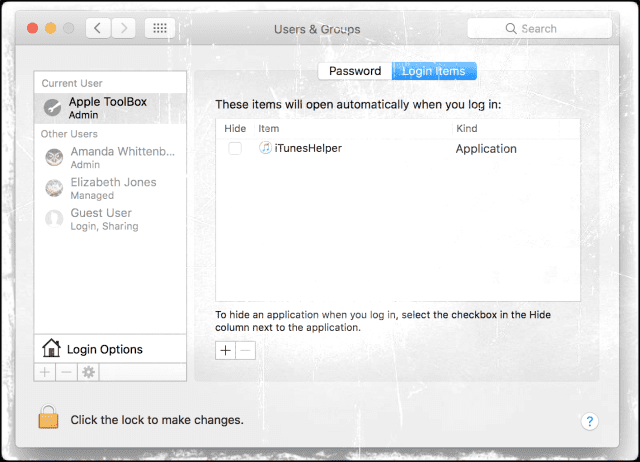
Not every question will be answered, we don’t reply to email, and we cannot provide direct troubleshooting advice. Once you know what programs boot with the system, you can remove select entries that. Checking to see what apps are automatically starting is a breeze.
#MAC STARTUP PROGRAMS FOR OTHER USERS HOW TO#
If not, we’re always looking for new problems to solve! Email yours to including screen captures as appropriate, and whether you want your full name used. How to Remove Startup Items from Your Mac. We’ve compiled a list of the questions we get asked most frequently along with answers and links to columns: read our super FAQ to see if your question is covered.
#MAC STARTUP PROGRAMS FOR OTHER USERS MAC#
This Mac 911 article is in response to a question submitted by Macworld reader Jade.

This doesn’t prevent another user from installing the same app, if they have access to an installer or download, into the main Applications folder or for themselves, however. You may be prompted to enter an administrative password, or if you have a Mac with Touch ID, to validate the move with a fingertip. (You must hold down Command or macOS will create an alias instead of moving the app.) Hold down the Command key and drag the app from the main Applications folder into your personal one. One of the easiest ways to control startup items is inside System Preferences > Users & Groups. Therefore, if you have some time and would like to do it yourself, follow the steps below. Open a separate window with your app folder via the method noted above or navigating in the Finder through Users > full account name > Applications. Disabling Mac startup programs is possible manually. Step 5: Then go ahead and simply check in the startup programs that you. Step 4: Then after that, go ahead and choose on the Login item. Step 3: And then, click on your nickname located on the right side of your screen. Step 2: After that, go ahead and click on Users and Groups. Open /Applications, either via Go to Folder, or by opening the main level of your drive in the Finder and double-clicking the Applications folder. Step 1: Go ahead and launch on the System Preference on your Mac.


 0 kommentar(er)
0 kommentar(er)
